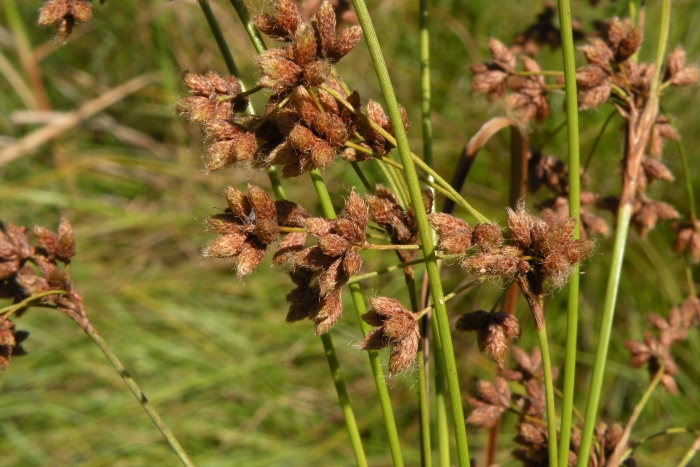Woolgrass
(Scirpus cyperinus)
Woolgrass (Scirpus cyperinus)
/
/

Doug McGrady from Warwick, RI, USA
CC BY 2.0








































































Estimated Native Range
Summary
Woolgrass is valued for its naturalistic appeal in water gardens, rain gardens, and as a stabilizing plant along pond edges or stream banks. It is also used for erosion control due to its robust rhizome system. This sedge thrives in full sun to part shade and requires consistently moist to wet soils, tolerating a range of drainage conditions from fast to slow. While it is generally low-maintenance, Woolgrass can spread vigorously and may need to be managed to prevent unwanted naturalization. It is not commonly afflicted by serious pests or diseases.CC BY-SA 4.0
Plant Description
- Plant Type: Grass
- Height: 3-5 feet
- Width: 2-4 feet
- Growth Rate: Moderate
- Flower Color: N/A
- Flowering Season: Summer
- Leaf Retention: Deciduous
Growth Requirements
- Sun: Full Sun, Part Shade
- Water: High
- Drainage: Fast, Medium, Slow
Common Uses
Bird Garden, Border Plant, Butterfly Garden, Deer Resistant, Low Maintenance, Rabbit Resistant, Water Garden
Natural Habitat
Wet meadows, marshes, and riparian zones across the Eastern United States, parts of Canada, and the Gulf Coast region
Other Names
Common Names: Cotton-Grass Bulrush, Marsh Bulrush, Wool-Grass, Teddybear Paws, Black-Sheathed Bulrush, Brown Woolly Sedge, Common Woolgrass, Common Woolly Bulrush, Cottongrass Bulrush, Scirpe Souchet, Bulrush
Scientific Names: , Scirpus cyperinus, Scirpus atrocinctus, Scirpus cyperinus var. pelius, Scirpus cyperinus var. eriophorum, Scirpus eriophorum, Scirpus rubricosus, Scirpus cyperinus var. cyperinus, Scirpus cyperinus var. laxus, Scirpus cyperinus var. rubricosus
GBIF Accepted Name: Scirpus cyperinus (L.) Kunth